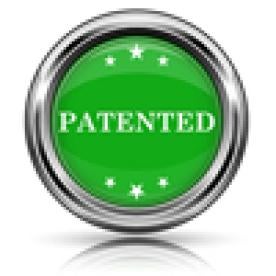In just the second instance since America Invents Act (AIA) / post-grant reviews became available, the Patent Trial and Appeal Board (PTAB or Board) allowed a patent owner to substitute new claims in its patents in the course of an inter partes review (IPR) proceeding. Riverbed Technology, Inc. v. Silver Peak Systems, Inc., Case IPR 13-00402 and 00403 (PTAB, Dec. 30, 2014) (Arbes, APJ).
The petitioner filed petitions for inter partes review of the claims of two of the patent owner’s patents. Rather than file a Patent Owner Response for each petition, the patent owner filed a Motion to Amend seeking to cancel all challenged claims and replace them with six new claims in each patent. The Board found that the patent owner met its burden of proof to demonstrate, by a preponderance of the evidence, the patentability of the proposed substitute claims for two of the substitute claims for each patent.
Proposed substitute claims “may not enlarge the scope of the claims of the patent.” 37 C.F.R. § 42.121(a)(2)(ii). The Board found that each permitted substitute claim included “all of the limitations of the corresponding claim for which it is a substitute, and add[ed] additional limitations” and therefore did not enlarge the scope of the original patent claims. The petitioner did not dispute that the substitute claims did not enlarge the scope of the original patent claims.
The patent owner cited paragraphs and figures of the patent applications to demonstrate “support in the original disclosure of the patent for each claim that is added or amended,” [37 C.F.R. § 42.121(b)], which the petitioner also did not dispute. The Board concluded that the patent owner made sufficient showing that the permitted substituted claims had written description support in the disclosures of the applications as filed.
The patent owner provided proposed interpretations for terms in the proposed substitute claims (again which the petitioner did not dispute), which the Board concluded were the broadest reasonable constructions in light of the specification in which they appear.
The patent owner bore the burden of proof to demonstrate patentability of its proposed substitute claims “over not just the prior art of record, but also prior art not of record but known to the patent owner” by identifying “specifically the feature or features added to each substitute claim,” and “com[ing] forward with technical facts and reasoning about those feature(s)” (citing Idle Free). On this issues the petitioner did raise a dispute, arguing that the patent owner only attempted to distinguish the proposed substitute claims over the prior art references at issue in the proceeding. However, the Board found that the patent owner addressed other prior art in addition to the prior art references at issue and prior art references of record. The petitioner also argued that the patent owner failed to provide a declaration from a technical expert in support of its arguments regarding patentability. However, the Board held that such declarations are not a prerequisite for a motion to amend.
Thus, the Board concluded that the patent owner had shown, by a preponderance of the evidence, that the permitted substitute claims were patentable over the prior art. Accordingly, the Board granted the patent owner Motion to Amend as to the permitted substitute claims.
Practice Note: When amending claims in an IPR, a patent owner is not required to provide a declaration from a technical expert, but the patent owner should address prior art not of record but known to the patent owner.



 i
i


